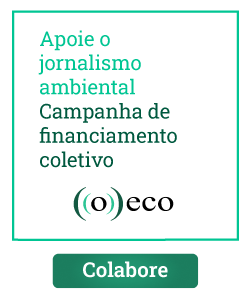Present almost everywhere on Earth, suspended in the air, hidden within glaciers, volcanoes, and even residing within our bodies, the fungal big family stands as a pillar of ecological and climatic equilibrium on our planet. Not to mention their acknowledged roles as providers of nourishment and saviors of human lives.
Though evolutionarily closer to animals, fungi were categorized as members of the flora for years. Yet, while about 90% of plant species worldwide have been scientifically identified, a mere 150 thousand (4%) of the estimated 3.8 million fungal species have been registered.

In Brazil alone, almost 6.5 thousand distinct fungi have been documented. Recent discoveries have unveiled new species in Goiás and surrounding the São Joaquim National Park in Santa Catarina. The Amazon rainforest and other biomes could be sheltering countless more.
Scientific endeavors are shining a light on the diversity and potential applications of the Fungi group. Fungal species have attracted more attention due to increasing commercial production, resulting in decreasing market prices, and to fictional shows where fungi turn people into zombies.
Unique Dimensions
The mushrooms we savor are fungi. So are the molds we encounter, the shelf fungi found in forests, and countless others. They inhabit both terrestrial and aquatic ecosystems. Their palettes span from muted grays to vivid colors. A dozen Brazilian species light up during the night – they’re bioluminescent.
Neonothopanus gardneri, a species from the Cerrado biome, is one of the world’s largest and most powerful luminescent fungi. Its glow is produced in a manner similar to that of fireflies and bacteria, and can lure insects that help disperse their spores, aiding in their reproduction.
Some are frail, shattering at the slightest touch, while others are as tough as can be. Certain species have endured space travel and the radiation of Chernobyl’s reactor. Its 1986 explosion in the city of Pripyat, now in Ukraine, marked one of history’s most catastrophic nuclear incidents.
Research suggests that fungal filaments stretch for 450 quadrillion kilometers on planet Earth, all within a 10 cm soil layer. That distance equals half the width of our galaxy, or 3 trillion Earth-Sun distances.
Integrated into traditional Chinese medicine, fungi from the Cordyceps family live on plants. Insects attacking these plants get infected by their spores, becoming “zombie-like” until the fungi reproduce. This peculiar behavior provided inspiration for the post-apocalyptic game and series, “The Last of Us“.
Growing amidst exotic tree farms in the South and Southeast regions, mushrooms and truffles have become the target of specialized “hunts” on estates, particularly during the cooler seasons. These “gourmet safaris” are led by specialized agencies and even employ sniffer dogs.
Natural Benefits
Fungi aid in the fermentation of our morning bread, of our wines, beers, and cheeses. They’re also responsible for pharmaceutical developments, such as penicillin, which alone increased human life expectancy by 23 years since its 1938 discovery. In the East, millennia-old records list fungi as treatment for ailments like cancer and sexual dysfunctions.
Inhabiting our gut flora, they ensure the digestion of our food. In various creatures, they thrive as parasites, assist in nutrient absorption, and establish colossal communication networks between plants. A single tree might harbor over 200 distinct fungi throughout its roots, branches, and leaves.
Fungi also bolster soil health and aid in the decomposition of plants, animals, and other species’ remains, preserving forest vitality. They also play an instrumental role in the natural carbon dioxide (CO2) cycle, helping mitigate part of the global climate crisis instigated by human actions.
Research from the University of Sheffield in England revealed that fungi capture one-third of the annual CO2 emissions resulting from the burning of fossil fuels like petroleum and coal derivatives. This happens because fungal networks transfer nutrients and extract the gas from plants.
A study published in Fungal Diversity estimated that fungi mobilize nearly US$55 trillion in the global economy. This figure encapsulates their value across various sectors, encompassing ecological and environmental services for humans, as well as their health and nutrition contributions.
Ants ingeniously cultivate “gardens” of fungi using leaf fragments brought back to their nests. This symbiotic relationship offers fungi a secure environment for growth, breaking down the cellulose of plant matter that the insects cannot digest. The ants can then eat the fungi itself.
Certain species produce fats crucial for the growth of Scaptotrigona depilis bee larvae. Known locally as Mandaguari or Canudo, these stingless bees are recognized in several Brazilian states by the distinctive tubes they craft at the entrance to their hives.
A Mushroom Feast
Experts forecast a rise in fungi’s applications as agricultural and industrial resources, in biotechnological processes, and especially as a sustainable non-animal protein source in human diets.
The second edition of the Fungos Alimentícios Não Convencionais de Angatuba (Unconventional Edible Fungi of Angatuba) guide lists 45 edible mushroom species, which can be found in other parts of Brazil. Most require at least a brief boiling prior to consumption.
The publication aids identification with clear descriptions, photographs, and straightforward language, catering to enthusiasts, students, educators, chefs, researchers, nature lovers, and, of course, those exploring alternative food sources.
Risks to Humans
Certain fungi can induce skin and nail infections, as well as poisonings and infections of internal organs, especially in immunocompromised individuals. Studies indicate that certain fungi exacerbated the mortality rates among hospitalized patients with COVID-19.

Primarily spread by stray cats, the Sporothrix brasiliensis fungus can cause skin lesions, eye and nose complications, and even pulmonary issues. This species, overlooked until the mid-1990s, have been reported in Brazil, Argentina, Paraguay, Bolivia, Colombia, Panama, England, and the United States.
A compilation by scientists enumerated the ten fungi deemed most hazardous to humanity. This list includes species that can “consume brains”, cause fatal infections, obliterate entire crops and wooden structures, induce pulmonary hemorrhages, and even potentially cause the extinction of frog species.
Threats to Fungi
Entire ecosystems might collapse without the essential services of fungi. Yet, they face global threats, ranging from the expansion of agriculture and urbanization to the climate crisis, invasive species encroaching on natural habitats, pollution, and particularly in Brazil, the eradication of native vegetation.
Even in face of such threats, they haven’t made their way onto Brazil’s endangered species lists, nor are they part of federal and state policies and actions dedicated to biodiversity conservation. The International Union for Conservation of Nature (IUCN) only recognized the first fungi at risk in 2003.
Today, the IUCN considers that almost half (48%) of the 597 fungi species analyzed are on the brink of extinction. Of these, 5% are critically endangered, 17% are endangered, 25% are vulnerable, 10% are near threatened, and 34% seemingly not at risk of extinction. The data was insufficient to categorize the remaining 9%.
Meanwhile, countries such as Australia, the United States, and the United Kingdom are already assessing their fungal situations. In Europe, an advisory board is broadening discussions about conservation and listing species across the continent. Many European countries have laws that safeguard biodiversity, fungi included.
Nations like China, Japan, and Korea are among the top consumers of fungi. Mexico as well, due to their preservation of traditional knowledge. In South America, at least Chile has federal legislation in place to protect fungi. Brazil has not yet created such specific protections.
Political Science
In Brazil, endangered animal and plant species are listed by the Chico Mendes Institute for Biodiversity Conservation (ICMBio) and the Rio de Janeiro Botanical Garden (JBRJ). Fungi have been left adrift, without a national red list.
But domestic species are far from safe. Scientific meetings held in 2020 and 2021 identified 32 Brazilian fungi species at risk of extinction. An unofficial list of endangered species in the country is maintained by the Federal University of Santa Catarina (UFSC).
In January, the IUCN acknowledged the first group of experts dedicated to fungi conservation in Brazil. This team aims to ignite the agenda with more extensive research on species diversity and threats, professional training, education, communication, and political engagement.
Other sources and studies consulted
Elisandro Dechsler Santos – postdoctoral researcher at the National University of Córdoba (Argentina) and the Federal University of Santa Catarina (UFSC). He is part of international and national groups focused on fungi research and conservation, such as MIND.Funga.
Leonor Costa Maia – PhD in Plant Ecology from the University of Florida (USA) and Professor of Fungal Biology at the Federal University of Pernambuco (UFPE). She was president of the Botanical Society of Brazil.
Larissa Trierveiler Pereira – Post-doctorate in Biosciences and Pathophysiology from the State University of Maringá (PR) and the Botanical Institute of São Paulo (SP). Professor and researcher at the Mycological Studies Laboratory of the Federal University of São Carlos (SP).
- https://www.mdpi.com/1424-2818/14/9/736
- https://mindfunga.ufsc.br/o-que-significa-funga
- https://www.ncbi.nlm.nih.gov/pmc/articles/PMC3708484/
- https://link.springer.com/article/10.1007/s13225-018-0413-9
- https://www.cell.com/current-biology/pdf/S0960-9822(23)00167-7.pdf
- https://www.sciencedirect.com/science/article/pii/S175450482030101X
- https://efi.int/news/open-letter-crucial-role-fungi-preserving-and-enhancing-biodiversity-2022-12-14
- https://phys-org.cdn.ampproject.org/c/s/phys.org/news/2023-06-hidden-carbon-fungi-necromass-absorb.amp
- https://www.psychologytoday.com/us/blog/the-gut-brain-axis/202210/new-microbiome-research-misses-critical-component-fungi
- https://link.springer.com/article/10.1007/s13225-023-00520-9#:~:text=Fermented%20food%20and%20beverage%20products,of%20carbon%20in%20the%20soil
- https://fungalbiolbiotech.biomedcentral.com/articles/10.1186/s40694-020-00095-z

Leia também

A Shrinking Home: a monkey cornered by deforestation
Researchers race against the destruction of the Amazon to ensure the survival of the Mato Grosso titi monkey, one of the world's most endangered primates →

Brazil a wreck on trawling control
The lack of control amplifies the impacts of trawling, a technique that uses fine-mesh nets to “scrape” the seabed, sweeping up everything in their path; species of low commercial value return to the waters, almost always dead. →

Criminal frontiers
A global center of illegal trade in goods, the borders between South American countries have become a target for the growing and lucrative international trafficking of agrotoxics. →

























